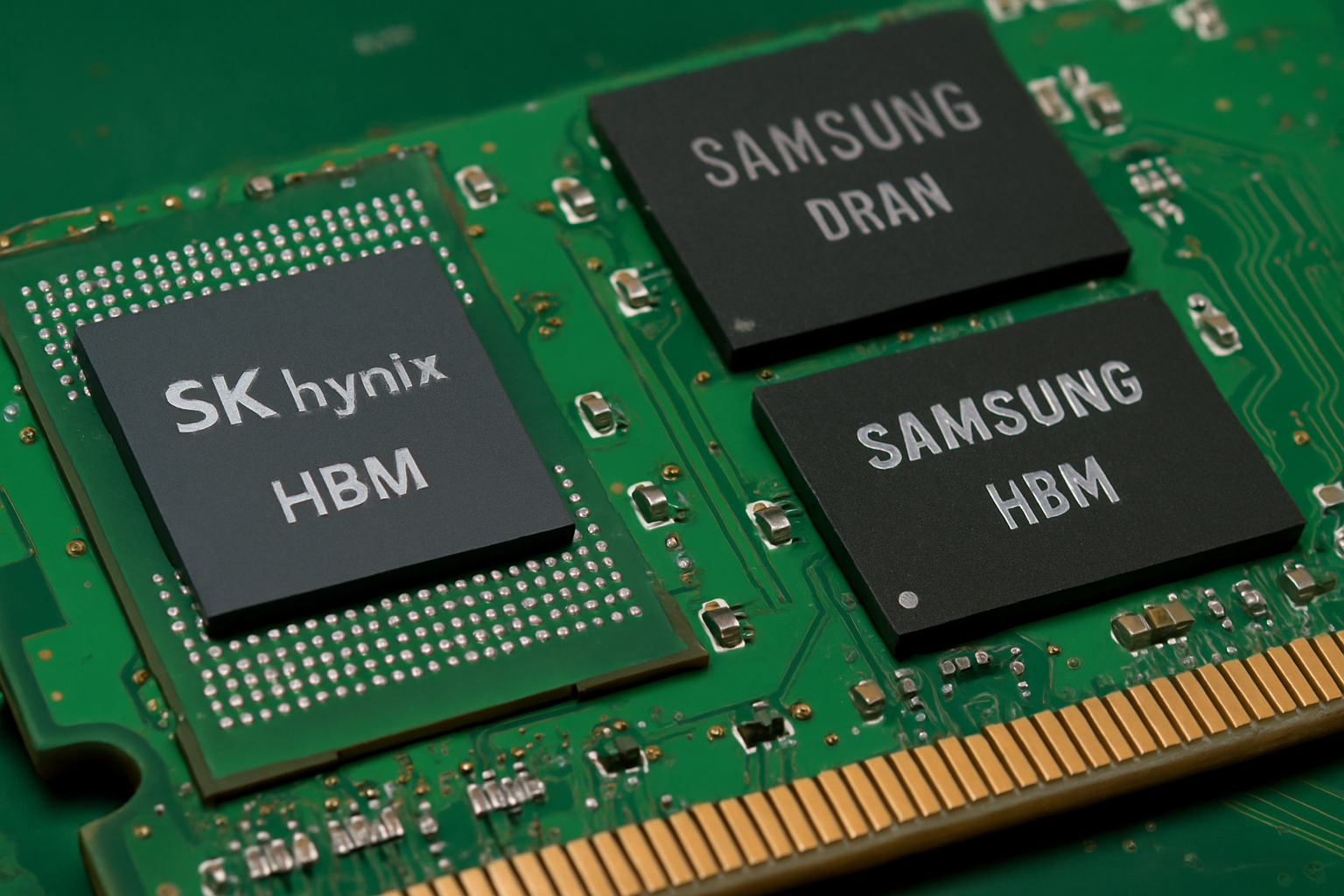The rise of High-Bandwidth Memory (HBM) technology has reshaped the semiconductor industry, and few companies feel the pressure more than Samsung. While the South Korean tech giant has dominated the global memory market for decades, the shift toward HBM a critical component for artificial intelligence and advanced computing has exposed weaknesses in Samsung’s strategy. Competitors like SK Hynix have surged ahead, leaving Samsung to play catch up in a market it once led.
The Evolution from DRAM to High-Bandwidth Memory
For years, Samsung’s crown jewel was Dynamic Random Access Memory (DRAM), found in almost every major computing device. But the growing complexity of AI models, from large language models like ChatGPT to autonomous driving algorithms, has created a need for much faster and more efficient memory solutions.
Enter High-Bandwidth Memory a technology capable of dramatically improving data transfer speeds while reducing power consumption. Initially used in gaming GPUs, HBM has become the backbone of AI training and inference, powering cutting edge hardware like NVIDIA’s H100 and AMD’s MI300X chips.
While SK Hynix began investing heavily in HBM as early as 2015, Samsung treated it as a niche market. By the time AI adoption exploded in 2023, SK Hynix already had a mature product line and strong customer relationships, while Samsung was still ramping up production.
According to Mark Li, senior semiconductor analyst at Bernstein Research. HBM development cycles are long and expensive. The companies that commit early can refine their technology through multiple generations. Samsung entered late, and that cost them valuable contracts.
This lag has given SK Hynix a commanding share of the HBM market, especially with their HBM3 and HBM3E offerings, which are preferred by major AI hardware vendors for their performance and energy efficiency.
NVIDIA’s Strategic Choice
NVIDIA, the world’s leading AI chipmaker, has been a key driver of HBM demand. Its decision to source most of its HBM3 chips from SK Hynix rather than Samsung is a telling blow.
In 2024, NVIDIA executives cited performance consistency and early availability as deciding factors in awarding SK Hynix the bulk of its orders. This not only hurt Samsung’s revenue potential but also positioned SK Hynix as the go to partner for AI driven memory needs.
During my visit to Samsung’s Suwon Digital City in late 2022, I spoke with engineers who were still deeply focused on DRAM development. One admitted, We knew AI was growing fast, but the pace of change in memory requirements surprised us. We thought DRAM improvements would be enough to stay competitive.
This mindset reflects a broader corporate tendency at Samsung prioritizing proven revenue streams over high risk bets. While that strategy works in stable markets, in fast moving sectors like AI, it can leave even industry leaders behind.
The Economic Stakes for South Korea
Samsung’s struggle in the High-Bandwidth Memory race isn’t just a corporate problem it’s a national concern. Semiconductors make up roughly 20% of South Korea’s exports, and Samsung is the country’s most valuable tech brand.
Economist Lee Min-ho from the Korea Institute for Industrial Economics & Trade warns. If SK Hynix remains the sole leader in HBM, South Korea’s tech sector becomes overly dependent on one supplier. A healthy competitive balance between Samsung and SK Hynix benefits the entire economy.
The demand for High-Bandwidth Memory is not limited to AI chatbots or image generators. Industries like climate science, defense, 5G networking, and autonomous vehicles require the same high speed memory to process massive data sets. Without competitive HBM offerings, Samsung risks losing contracts across multiple high growth markets.
Determined to close the gap, Samsung has announced multi billion dollar investments in new semiconductor fabs in South Korea and the United States. The company is also working on HBM3E products to match SK Hynix’s performance benchmarks by 2025.
Moreover, Samsung plans to leverage its vertical integration combining memory production, chip design, and foundry services to offer AI customers an end to end hardware solution. This could appeal to companies looking for supply chain stability in a volatile market.
Lessons from Past Turnarounds
This is not the first time Samsung has been behind in a critical technology. In the early 2000s, it lagged behind in NAND flash memory but overtook rivals within a few years through aggressive R&D spending and strategic acquisitions. Industry watchers say a similar comeback in High-Bandwidth Memory is possible if Samsung moves fast.
Daniel Newman, CEO of The Futurum Group, observes. Samsung has the scale, capital, and talent to recover. The question is whether it can break free from the slow moving corporate culture and make the bold moves necessary in an AI driven market.
Market forecasts from TrendForce suggest that HBM demand will grow threefold by 2027, driven largely by AI infrastructure buildouts. But competition is intensifying, with US based Micron and even Chinese semiconductor firms accelerating their own HBM development.
If Samsung fails to secure major AI partnerships within the next 18 to 24 months, the long term consequences could be severe. Loss of market share in HBM could weaken its overall semiconductor dominance, affecting everything from smartphone chips to data center hardware.
The story of Samsung and High-Bandwidth Memory is a lesson in how quickly the tech landscape can shift. Industry leaders cannot afford to underestimate emerging technologies, especially in sectors like AI where demand can explode almost overnight.
Samsung’s future in the semiconductor market may well depend on how quickly and how boldly it can reclaim lost ground in HBM. For now, SK Hynix holds the crown, but history has shown that Samsung is capable of remarkable comebacks. Whether it can repeat that success in this new memory race remains to be seen.

